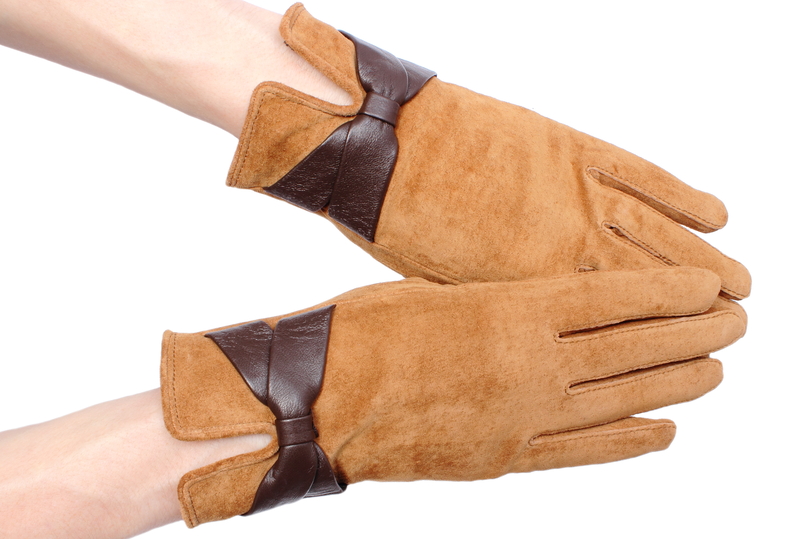Simple Solutions for a No-Mold Bathroom Experience
Posted on 24/06/2025
Simple Solutions for a No-Mold Bathroom Experience
The battle against bathroom mold is one many homeowners face, and it's a challenge that shouldn't be ignored. A no-mold bathroom creates a healthier, cleaner, and more inviting space, but how do you keep those persistent mold spores at bay? Luckily, achieving a mold-free bathroom is absolutely possible with the right solutions. In this comprehensive guide, you'll learn expert-backed strategies and simple steps to prevent and remove mold, transforming your bathroom into a fresh, hygienic sanctuary.

Why Mold-Free Bathrooms Matter
Before diving into no-mold bathroom solutions, it's important to understand why mold is such a problem. Mold isn't just an unsightly annoyance--it's a potential health risk, especially for those with asthma, allergies, or compromised immune systems. Here's why prioritizing a mold-free bathroom is crucial:
- Health Risks: Mold releases spores that can trigger allergies, asthma, and respiratory issues.
- Structural Damage: Persistent moisture and mold growth can damage walls, tiles, and grout, leading to costly repairs.
- Unpleasant Odors: Mold creates musty, lingering odors that are hard to eliminate without addressing the source.
- Decreased Home Value: Visible mold is a red flag for potential buyers and may reduce property value.
Understanding Why Mold Grows in Bathrooms
Bathrooms are hotspots for mold because of their unique environment. Steam from hot showers, poor ventilation, and frequent water splashes combine to create the ideal conditions for mold to thrive.
Common Causes of Bathroom Mold
- Poor Ventilation: Without adequate airflow, moisture lingers and encourages mold growth.
- Leaky Fixtures: Dripping faucets or pipes create persistent dampness, providing a perfect habitat for mold.
- Neglected Cleaning: Soap scum and residues can trap moisture, attracting mold colonies.
- Absorptive Surfaces: Materials like unsealed grout or wallpaper absorb water and harbor spores.
10 Simple Solutions for a No-Mold Bathroom Experience
Ready to embrace a mold-free bathroom lifestyle? Follow these effective steps and tips to eliminate existing mold and stop new growth in its tracks.
1. Improve Bathroom Ventilation
- Use Exhaust Fans: Always run your bathroom fan during and after bathing or showering. Let it run for at least 20 minutes after to remove residual humidity.
- Open Windows: If possible, crack a window open for fresh air circulation, which helps dry walls and floors faster.
Tip: Regularly clean the exhaust fan cover and check for dust buildup.
2. Address Water Leaks Immediately
- Fix Dripping Faucets: Replace washers or repair plumbing as soon as you spot leaks.
- Check Under Sinks: Inspect under cabinets regularly for slow leaks or water stains, and fix them ASAP.
- Seal Toilet and Tub Bases: Make sure caulking and seals are intact.
Remember, moisture is mold's best friend--so keep leaks at bay!
3. Use Moisture-Resistant Materials
- Opt for Mold-Resistant Paint: Specialty paints resist mildew and are ideal for humid spaces like bathrooms.
- Choose Tile or Waterproof Panels: On walls and floors, select materials that don't absorb water.
- Seal Grout and Joints: Waterproof sealants protect grout and tile seams from soaking up moisture.
4. Adopt a Regular Cleaning Routine
- Scrub Shower & Tub Weekly: Use a dedicated bathroom cleaner or a vinegar solution to remove soap and mineral deposits.
- Wash Bathroom Rugs: Launder bath mats and towels regularly to prevent mold build-up.
- Clean Walls and Ceilings: Wipe down surfaces to prevent spores from taking hold.
5. Dry Surfaces After Use
- Wipe Shower Walls: Use a squeegee or towel to dry tiles and glass after every shower.
- Hang Towels to Dry: Always hang towels on bars or hooks, never leave them in a pile.
This easy habit goes a long way in ensuring a no-mold bathroom experience every day.
6. Declutter and Organize
- Minimize Items: Keep shower shelves and countertops free of unnecessary bottles and clutter, which trap moisture and hide mold.
- Use Open Storage: Baskets and racks promote air flow around stored items.
An organized, minimal bathroom is not only more attractive--but also more inhospitable to mold.
7. Increase Natural Light
- Open Curtains or Blinds: Sunlight is a natural mold deterrent, so let it in whenever possible.
- Add Mirrors: Reflect natural or artificial light to brighten dark corners where mold often lurks.
8. Use Dehumidifiers or Air Purifiers
- Install a Dehumidifier: Compact models fit discretely and efficiently remove excess moisture.
- Air Purifiers with HEPA Filters: These capture airborne mold spores, improving indoor air quality for a no-mold bathroom experience.
9. Try Natural Mold-Prevention Remedies
- Vinegar Spray: Fill a spray bottle with white vinegar and mist your shower area post-use. Vinegar's acidity destroys most mold types.
- Baking Soda Paste: Scrub tiles and grout with a paste made from baking soda and water. This helps dislodge mold and also acts as a mild disinfectant.
- Hydrogen Peroxide: Apply 3% hydrogen peroxide solution to moldy spots, let it bubble, and then wipe clean.
10. Replace Old Caulking and Grout
- Remove Deteriorated Caulk: Over time, caulk and grout break down and harbor mold. Scrape away old material and apply a fresh, mold-resistant sealant.
- Re-seal Annually: Make re-sealing part of your annual maintenance routine to ensure lasting protection.
These simple solutions for a mold-free bathroom are easy to implement and can make a dramatic difference in both appearance and hygiene.
How to Spot Early Signs of Bathroom Mold
- Discoloration: Look for gray, black, green, or pink patches on walls, ceilings, and tile grout.
- Persistent Musty Odor: A damp, earthy smell is often the first sign--or even the only sign--of hidden mold.
- Peeling Paint or Wallpaper: Lifting or bubbling can indicate water damage and potential mold growth.
- Condensation: Recurrent condensation on mirrors and windows is a clue that ventilation needs improvement.
If you notice any of these warning signs, take immediate action to clean up and prevent further mold development.
Effective Mold Removal Techniques
If you already have visible mold, follow these proven steps for safe removal and future prevention:
DIY Mold Cleaning Steps
- Protect yourself: Wear gloves, a mask, and goggles to avoid contact with spores.
- Ventilate the area: Open windows and run fans while cleaning.
- Apply a cleaning solution: Use a mixture of water and white vinegar or a bathroom-approved mold remover.
- Scrub thoroughly: Use a stiff brush to remove mold from all affected surfaces, especially grout lines and silicone seals.
- Rinse and dry: Wipe down with clean water and thoroughly dry the area to prevent recurrence.
Note: For mold-infested drywall, ceiling tiles, or insulation, professional remediation may be needed.
Long-Term Prevention for a No-Mold Bathroom
To maintain a mold-free bathroom in the long run, remember these best practices:
- Inspect plumbing and caulk every few months.
- Refresh paint and sealants as required.
- Keep humidity below 50% with dehumidifiers or improved ventilation.
- Deep clean regularly with anti-mold products.
- Encourage all family members to adopt daily drying and ventilating habits.
Consistent, proactive care is the key to a lasting no-mold bathroom solution.

Frequently Asked Questions: No-Mold Bathroom Solutions
How often should I clean my bathroom to prevent mold?
At least once a week. For high-traffic or humid bathrooms, twice a week is best. Target shower walls, grout, corners, and behind fixtures where moisture collects.
Can houseplants help prevent bathroom mold?
Certain houseplants, such as Boston ferns and peace lilies, can absorb some humidity and improve air quality. However, always monitor for overwatering, as this can introduce new sources of mold.
What's the best product for killing bathroom mold?
White vinegar and hydrogen peroxide are both highly effective for non-porous surfaces. Commercial cleaners specifically labeled "mold and mildew remover" are suitable for tougher jobs.
Should I replace my shower curtain?
Yes, if you notice mold staining or excessive odor. Opt for machine-washable or antimicrobial shower curtains for easy maintenance.
When do I need to call a professional?
If mold growth covers more than 10 square feet, returns after repeated cleaning, or if you suspect hidden leaks or ventilation issues, consult a licensed mold remediation expert.
Conclusion: Enjoying a No-Mold Bathroom Year-Round
Achieving a truly no-mold bathroom experience is easier--and more affordable--than most people realize. By focusing on moisture control, attentive cleaning, quality materials, and consistent habits, you can banish bathroom mold for good. Implement these simple solutions starting today, and enjoy a healthier, more beautiful bathroom every day of the year.
Ready to say goodbye to mold for good? Start small, stay vigilant, and you'll enjoy the peace of mind that comes with a sparkling, mold-free bathroom.





